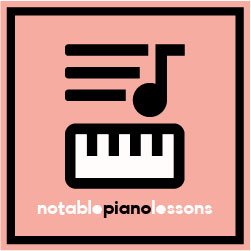
Lohnay Bishoff
Instructor’s Learning Tips
There are a lot of categories on this practice chart. You don’t have to use them all. They are there to prompt you to think about how you may want to structure a practice session. Right now if you just want to spend 10 minutes a day–that’s fine–progress can be made. If you want to do a little more, this chart will help you think of ways to set up a practice session.
When I challenge my students to practice for 30 minutes a day– a lot of them don’t think they have enough material to practice that much. When you start going through these different categories, you can see how you could easily turn a practice session into at least 30 minutes.
Let me go through some of these categories and give you some tips.
1. Warm ups This could be anything that you have played before that you want to use to just warm up your hands and fingers. You generally don’t want to start with a fast tempo as this can cause injury. I would suggest a scale or set of scales that you have mastered.
2. Technique This would be any current scales, chords, finger exercises that you are currently trying to improve upon.
3. Songs These are pieces you are currently working on perfecting.
4. Theory This would include studying anything musical to help you learn and understand note reading and music terminology. A few examples would be practice recognizing your note names and and what keys make up certain chords.
5. Sight Reading The more music you practice reading different music, the better sight reader you will become. Challenge yourself to find new music that is easier than what your current note reading level is, at your note reading level and a little bit harder than your note reading level. Don’t worry about making these perfect. They shouldn’t be perfect–because the brain starts developing muscle memory and that is not what we are going for in sight reading practice. Just keep attempting to read new music–These are the students who eventually become great sight readers–not the ones that have a few perfected pieces down.
6. Review I would suggest picking at least one piece each week to review that you have learned in the past. If they are super easy, you could do more. This is just fun for one thing and helps you keep old songs current. You want to develop a repertoire of music that you are ready to play at any time.
7. Memorize Taking just 5-10 minutes of your practice time is fun to memorize some songs you like so you can play them for others without having to have sheet music in front of you. This is hard mental work and I will go into more depth later on this subject. Just know you don’t need to memorize all your pieces–just pick one at a time that you can be working on.

